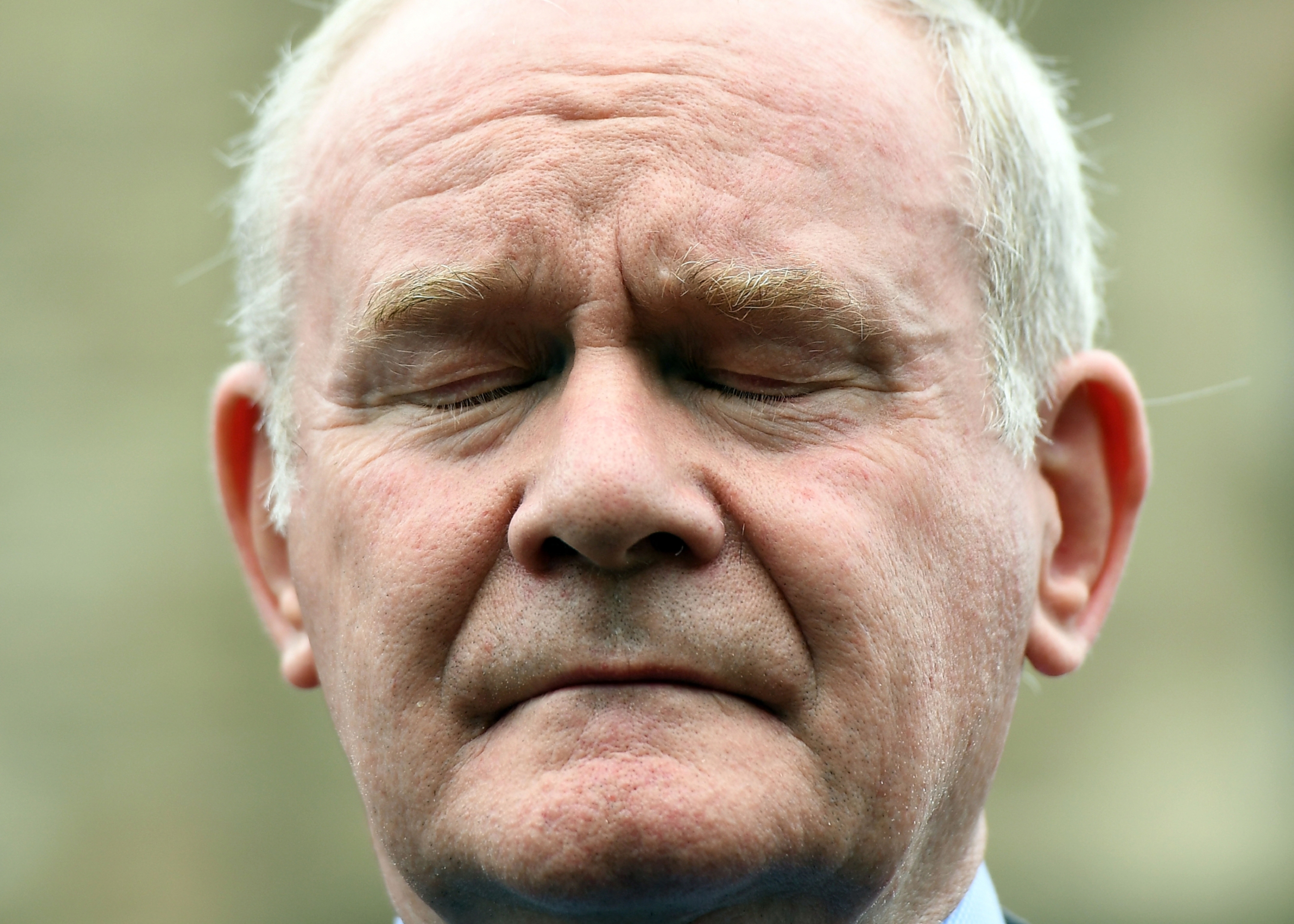As a terror attack occurs in the Palace of Westminster, it seems we can’t escape terrorism.
And yet there is no evidence it ever works.
Martin McGuinness was an affable chap.
I recall a joint ministerial meeting where a lone piper played and it was McGuinness who stepped to the front and enjoyed the music, while the Scottish ministers held back.
A happy man who killed and tortured.
He helped give the world kneecapping — shotguns were easily had in rural Ireland.
You won’t die from such an injury but the pain will be off-the-charts horrible and you’ll never walk alone after it — a stick will be your companion for the blasted leg.
Grotesque things
McGuinness as chief of the IRA not only kneecapped people but also did a range of other grotesque things in the name of a united Ireland.
On the same day that he died the UK government issued a ban on laptop computers being allowed as carry-on luggage from some airports into Britain.
This week also saw the first anniversary of a terror bombing in Belgium which killed 32 civilians.
Northern Ireland was devolved long before the word became fashionable — part of its invention in the early 20th Century included the illusion of local power. It had an assembly at Stormont and tax raising powers.
The armed struggle by McGuinness saw the Assembly suspended and direct rule imposed by the Labour government in 1973.
The IRA did not want devolved power from London but a complete Eire — the word refers to the whole of Ireland, not just the existing Republic.
Yet for all the 3,000 or so deaths in the war, the ending was a peace deal that “returned” devolved powers and an assembly, which sits in the same building as the old one.
Dig deeper and it’s more complex — McGuinness was objecting to the exclusion of Catholics from the franchise and government jobs and being treated like blacks in America.
But the end of the terror journey was still an assembly where McGuinness eventually rose to deputy first minister and from where he resigned recently over a strangely trivial issue — in the context of his career — concerning a botched green incentive.
Did he maim and kill in order to oversee a scheme promoting green energy in the six counties?
One hopes he has written an honest autobiography because it’s a very important life — an archetype of a political outrage and compromise.
It might give insights to understand the lives of those who lead Al Qaeda or ISIS or whatever is coming next.
The academic studies conclude that terrorism never works. Phases of violence within political struggles express an outrage and determination but almost never end up achieving the terrorists’ stated goal.
There are national liberation movements against colonial powers which buck this trend; the terror adds a brutality to the honest request for self-government.
India, Tunisia and Mozambique are just three examples where the demand for sovereignty was accompanied by bullets.
When the terror group represents a sub-national entity or no nation at all, then they always fail — Baader Meinhoff, IRA and the various forms of US domestic terrorism spring to mind.
When McGuinness thought he would take his noble history of fighting for Ireland to the ballot box of the Republic of Ireland in the form of a bid for the presidency, he was rejected.
The Irish in general did not celebrate the violence, or even much see the point in the Troubles — when the IRA ceasefire was in doubt in 1996, Dubliners marched in their thousands down O’Connell street to call for peace.
And when McGuinness put himself up for scrutiny by the voters of the South, they picked over his bloody history with open distaste.
Pointless
Which suggests the fanatics rewiring laptops so they can claim the top prize in the terrorists’ hit-list, a passenger plane in mid-flight, are also engaged in a task not only inhumane but pointless.
McGuinness deserves his credit for stopping the violence, taming the renegade thugs who wanted to start it all over again and cooperating within the democratic process.
As he also deserves the contempt of those whose family members died.
His brother in arms Gerry Adams writes that McGuinness never gave up on his dream of a united Ireland — in other words, he failed utterly. The Irish have given up on that road with nationalism overtaken by globalism.
Ireland deserves no less — it suffered at the hands of the Scots and the English, in a different age but that is passed and new generations are born entitled to new lives.
The perpetrators of Irish injustice are also dead and gone and new generations can see the value of not going back.
There will be other threats, other McGuinnesses, but history shows they will either learn the value of peace or fizzle out for lack of purpose.
And we shall be free again to tap our feet to the sound of music, smile and welcome others, in the insistent hope of something better to come.
